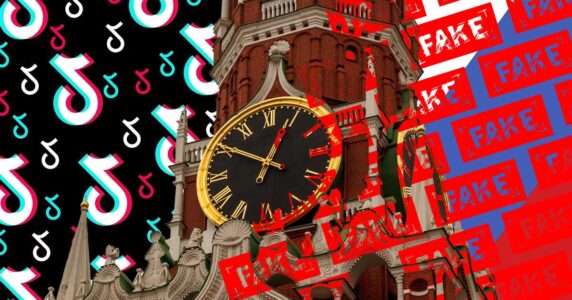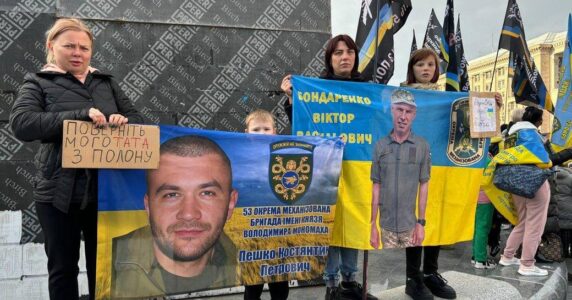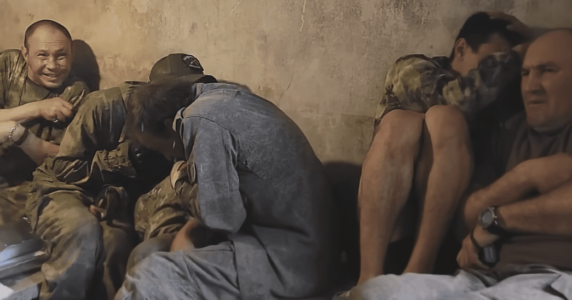Navigation and useful materials
Two years ago, Russia launched a full-scale invasion of Ukraine. With the expansion of the theatre of hostilities and a significant increase in their intensity, the information component of aggression was also enhanced. Kremlin propaganda simultaneously tries to justify an unmotivated attack, discredit Ukraine in the eyes of the world, deprive it of international support, demoralize and disorient Ukrainian society to minimize its ability to resist the aggressor. Propaganda efforts are also aimed at mobilizing Russians, concealing their own military failures, and convincing the world of Russia’s “invincibility.” Depending on the situation on the front, domestic and foreign policy situation, the Kremlin adjusts the topic of propaganda and shifts attention from one story to another.
The Centre for Strategic Communication and Information Security studies the information support of full-scale Russian aggression, analyses its dynamics, and identifies trends. Take a look at the dynamics of the information fight in the two years of the full-scale war.
Kyiv in three days (February–March 2022)
At the beginning of the full-scale offensive, Russian propaganda was euphoric from the anticipation of a quick triumph in the “small victorious” “special operation.” All information channels were overwhelmed, listing the achievements: Ukrainians were defeated, the Armed Forces of Ukraine did not resist, the fleet, aviation, air defence, decision-making centres of the “Kiev regime” were destroyed.

However, it was the enemy’s wishful thinking. Ukraine withstood and restrained the Russian onslaught. Kyiv, Kharkiv, Chernihiv, Sumy, Mykolaiv were more than the invader could take, columns of Russian matériel were burning on Ukrainian roads. The trend of the liberation war was set by the defenders of Snake Island, who told the Russian warship to go to hell.
Putin’s calls for Ukrainian generals to go over to his side remained unanswered, and the Ukrainians simply ridiculed the terrible (for the Russians) Kadyrov and his army. This period ended with the defeat of the Russian “blitzkrieg” and the “reduction of military activity” in the Kyiv and Chernihiv directions.
Goodwill gestures (April–July 2022)
Realizing that it was impossible to capture all of Ukraine at once, the enemy decided to concentrate on a more local and realistic goal—inflicting losses on the most capable Ukrainian forces in the east of the country. Putin’s strategists dreamed of large flank encirclements, and the “special military operation” itself was supposed to last symbolically until Victory Day—May 9.
It was a very difficult period for Ukraine. A war of attrition had begun, and the West had yet to launch the assistance process. There was a critical lack of artillery ammunition. The defence forces had to retreat from Izium, Sievierodonetsk, Lysychansk. After three months of defence, the Mariupol garrison surrendered its weapons in full encirclement. However, there were no encirclements in the Donbas as the enemy expected.
The truth of Bucha was revealed to Ukrainians and the world, the genocidal nature of the aggression became finally clear. The global community began to limit Russia with sanctions and expel it from international platforms. The Ukraine Defense Contact Group was launched and 155 calibre artillery and HIMARS systems were put into use. The Ukrainian Defence Forces sank the Moskva flagship of the Black Sea Fleet and liberated Snake Island.
Read the introduction to the book “How the Russian information ship went f.. Propaganda Narratives During a Full-Scale War” in English here
The Russians were looking for excuses for their failures: calling the escape from Snake “a gesture of goodwill,” the slow pace of the offensive was explained by considerations of a “humanitarian nature.” In official rhetoric, the term “allied troops” even appeared for a short time. However, only fighters of puppet pseudo-republics of the occupied part of the Donbas turned out to be members of the “international coalition.” To simulate the support of Russians by the Ukrainian population, a meme was spread about a “granny with a red flag,” which was later debunked by the Centre for Strategic Communication.
Trying to avoid sanctions, Russia began to blackmail the world with hunger, destroying Ukrainian harvests and arranging a naval blockade of ports. Under the pressure exerted by the international community, Moscow was forced to sign grain deals, which it intended to sabotage from the very beginning.
The second period began with the exposure of a large-scale crime of Russia (Bucha) and ended with the murder of prisoners of war in the Olenivka prison. Russian propaganda traditionally blamed the Ukrainian side for both crimes.
“General Armageddon” and “dirty bomb” (August–November 2022)
The third period passed marked the Ukrainian counteroffensive. It started in the south, as expected. Unexpectedly for all, the Defence Forces conducted a brilliant Slobozhanska operation, liberating most of the occupied Kharkiv Oblast and some territories of Donetsk and Luhansk oblasts. The Ukrainian liberators triumphantly entered Kherson. The war also touched the long-occupied Crimea: a Russian airbase in Novofedorivka and the Kerch Bridge were attacked.
For Russian propaganda, it was a time of humiliation and despair. Putin’s encouragement sounded like clumsy excuses: “Russia lost nothing, but strengthened its sovereignty,” “we did not start anything, but we strive to complete what began in 2014.” Moscow declared the Azov regiment to be terrorists and promised a trial of POWs, and then suddenly it exchanged the main commanders of the regiment for… Putin’s friend Medvedchuk.
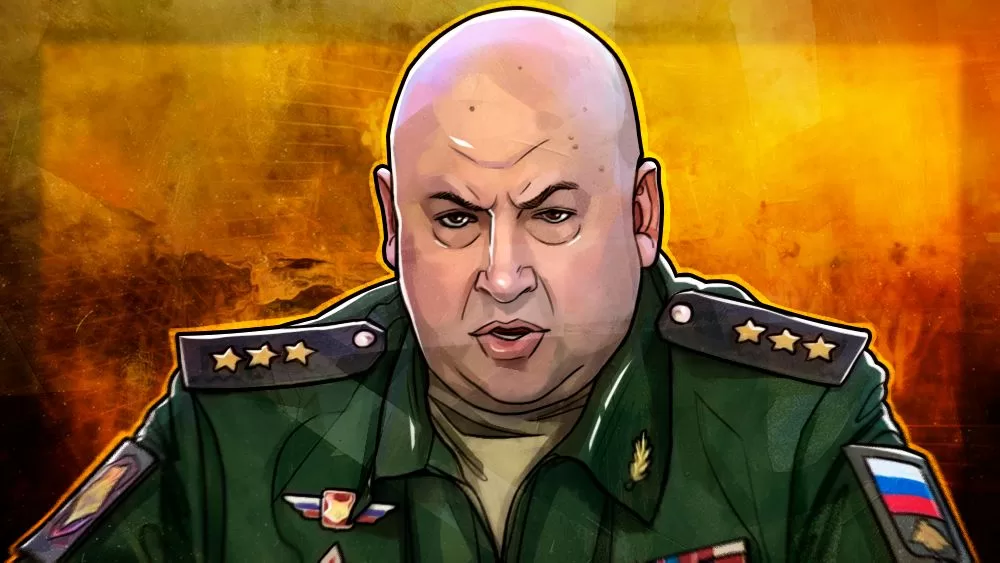
Revenge for these defeats was the pseudo-referendum in the occupied territories and the subsequent illegal annexation. This drove Russia into an even deeper diplomatic deadlock.
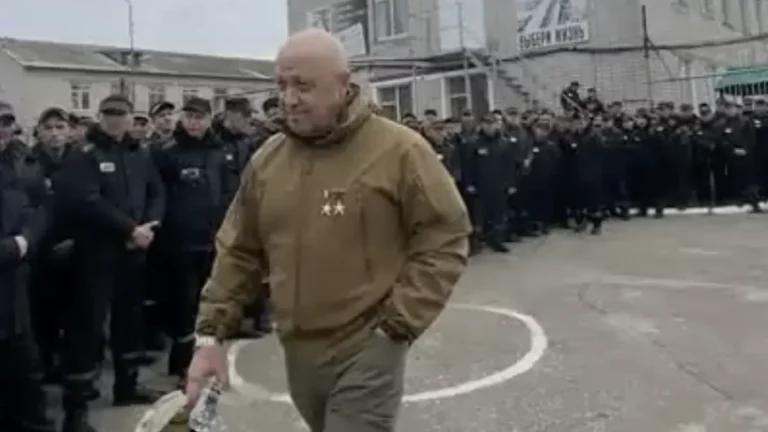
Russia then legalized the recruitment of prisoners in Wagner PMC and announced the first mobilization since World War II (delicately called “partial”). The Russians were explained that the special military operation might take long because it was necessary to fight not just with Ukraine, but with the entire “collective West.” Prigozhin and his comrade “General Armageddon” Surovikin had to win the war. The latter focused on air warfare: the destruction of critical infrastructure by missiles and drones before winter.
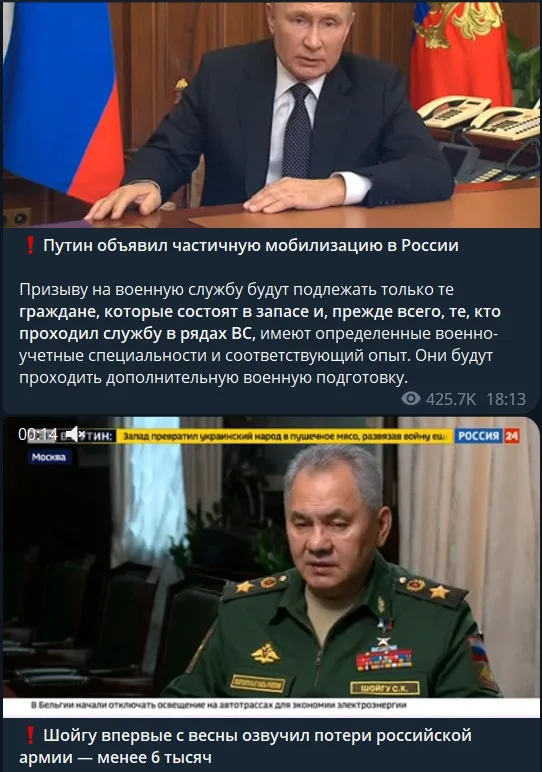
READ ALSO: Ukrainians without light. Why is the electricity really turned off?
Moscow actively threatened the West, either with its own nuclear arsenal or with a Ukrainian “dirty bomb,” or with problems at the ZNPP. Putin’s “gas war” with Europe ended with the blow-up of Nord Streams in the Baltic Sea. Russian propaganda traditionally blamed the opponents for the sabotage.
Meanwhile, Ukraine applied for NATO membership, and the UN General Assembly adopted a resolution on Russian reparations. After years of investigation, the District Court of The Hague sentenced the Russian murderers of passengers and crew of flight MH17.
“Bakhmut—the second Stalingrad” (winter 2022-2023)
The second winter of the full-scale war was a crash test for the Ukrainian energy system, which the enemy began to destroy in order to freeze Ukrainians and break their will to resist. There were direct calls from the propagandists to return Ukraine to the “stone age.”
The propaganda machine worked hard to split society, telling that while some suffered without heat and light, while others enjoyed life. The government was accused of supplying electricity abroad. Not only thermal power plants and power grids suffered from enemy missiles and drones, but also the homes of Ukrainians. In each case, enemy propaganda blamed the deaths on the “poor performance of the air defence system.”
READ ALSO: Killed in Their Own Homes. Putin’s War with Residential Districts
The goal of “the special military operation” was narrowed to reaching the administrative boundaries of Donetsk Oblast, declared a “people’s republic” within the Russian Federation. Thousands of conscripts and Wagnerites recruited in Russian prisons were involved into the attack. The losses of Prigozhin’s mercenaries near Soledar and Bakhmut, which propaganda declared a “second Stalingrad,” were colossal. The “Putin’s cook” began to openly complain about the Ministry of Defence and personally Minister Shoigu, the Chief of the General Staff Gerasimov.

Ukraine withstood the winter and inflicted painful blows on the enemy. Ukrainian drones reached the airbases of strategic aviation in Engels and Ryazan, there was an epic defeat of the Russian armoured unit near Vuhledar. Under the intense calls of Russian propagandists, U.S. President Joe Biden visited Kyiv.
Deed of a local boy and drones over the Kremlin (spring 2023)
Anti-Putin units of the Russian Volunteer Corps and the Freedom of Russia Legion conducted a raid in the Bryansk region in March, and in May, they opened a front in the Belgorod region. These audacious acts showed the Russians that it was quite possible to fight the Kremlin with weapons in their hands.
The official propaganda machine got seriously scared and tried to instil its fear in ordinary Russians from the border regions. They immediately invented dramatic stories about the deeds of a local boy, who turned out to be the son of migrants from Central Asia.

With modern Western air defence systems, Ukraine learned to shoot down Kinzhal aeroballistic missiles, a Russian super-weapon, which propaganda did not admit. Instead, it was difficult to ignore Ukrainian drones not just in Moscow, but right above the Kremlin (this was called an “assassination attempt on Putin”).
A demonstration of the dictator’s “courage” and a response to Zelenskyy’s regular trips to the front were videos of dubious authenticity about Putin’s voyage to occupied Mariupol.
To split Ukrainian society, Russian propaganda bet on religion; it tried to turn Muslims against Ukraine and accused Ukraine of persecuting “canonical Orthodoxy.” Putin was rightly accused by the International Criminal Court. The arrest warrant immediately closed the door to most countries of the world for the dictator.
Propaganda also tried to shake Ukrainians by spreading violent videos of war crimes, with the shooting of Oleksandr Matsievskyi and the beheading of another Ukrainian prisoner.
Propaganda worked on the topic of nuclear escalation when the deployment of nuclear weapons in Belarus was announced and depleted uranium ammunition was transferred to Ukraine by partners.
Hunting Leopard tanks (summer 2023)
The battle near Bakhmut destroyed not only tens of thousands of invaders, but also the nervous system of Evgeny Prigozhin. He knew about the weakness of the Russian rear, so he took advantage of the vulnerability: he captured the headquarters of the Southern Military District in Rostov-on-Don and then started his “march of justice” towards Moscow. The mutiny paralyzed the entire vertical of power and the entire propaganda machine. The leader of the mercenaries had a real chance of success, which he unexpectedly wasted. The lack of decisiveness to go to the end cost him his life; the same summer, Prigozhin was killed simply by shooting down his plane. Igor Girkin, a long-time critic of the Russian leadership, who before that had got away with everything, was also behind bars.
Another reason for the Kremlin’s concern was the expected summer counter-offensive of Ukraine. Propaganda prepared for it in advance. Its main “target” was Western armoured vehicles, primarily Leopard tanks. In their reports, the Russians “destroyed” Leopard tanks in unprecedented quantities. When there were not enough tanks, ordinary harvesters played their role.
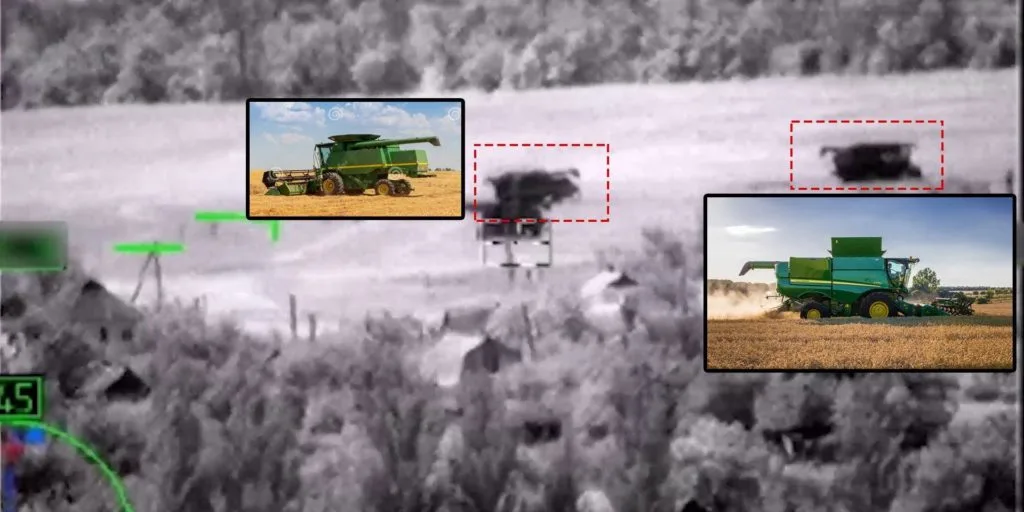
In fact, Ukrainians lacked modern Western equipment and ammunition. The tanks were provided too late, when the enemy had already managed to build a powerful line of defence. In those conditions, without proper air support, Ukrainian soldiers did their best.
The desire to stop the Ukrainian offensive in any way actualized the topic of “negotiations,” as well as another nuclear blackmail.
The Russians did not limit themselves to words and blew up the dam of the Kakhovka HPP, leading to almost the largest deliberate man-made disaster of recent decades. Traditionally, they blamed Ukrainians for their terrible terrorist attack.
Russia decided to return to food blackmail and finally withdrew from the grain deal. Against this background, the Kremlin’s active diplomacy unfolded in the countries of the Global South. St. Petersburg hosted the Russia-Africa summit, but Putin did not go to the BRICS summit in South Africa, fearing arrest under the warrant of the International Criminal Court.
Russia demonstrated its real attitude towards Africans by shelling Kyiv during the stay of a peacekeeping delegation of African leaders in the capital of Ukraine. Russia also launched air warfare against the port infrastructure to block food exports again. Despite all this, Ukraine successfully launched a temporary sea corridor, proving that the grain deal could operate without Moscow.
Anti-Semitism and pseudo-elections (autumn 2023–winter 2023-2024)
Russia has long been waiting for another front of global confrontation with the West. The terrible terrorist attack by HAMAS on Israel on October 7 was all Russia needed. It gave the Kremlin hope that the West would have to divide its military aid between Ukraine and Israel. Propaganda predicted that Ukrainians would quickly be forgotten. It is probably no coincidence that the Russian offensive on Avdiivka was synchronized with the beginning of the HAMAS attack.
Russian propaganda tried to make the most of the Middle East crisis: it accused Ukrainians of anti-Semitism and the transfer of Western weapons to HAMAS, and at the same time made Ukraine look “too pro-Israeli” to spoil its reputation in the countries of the Global South.
READ ALSO: Anti-Semitic Card of Russian Propaganda
Fuelling anti-Israel sentiment among the domestic Russian audience, Russian propaganda unleashed a genie of anti-Semitism and provoked Jewish pogroms in the North Caucasus.
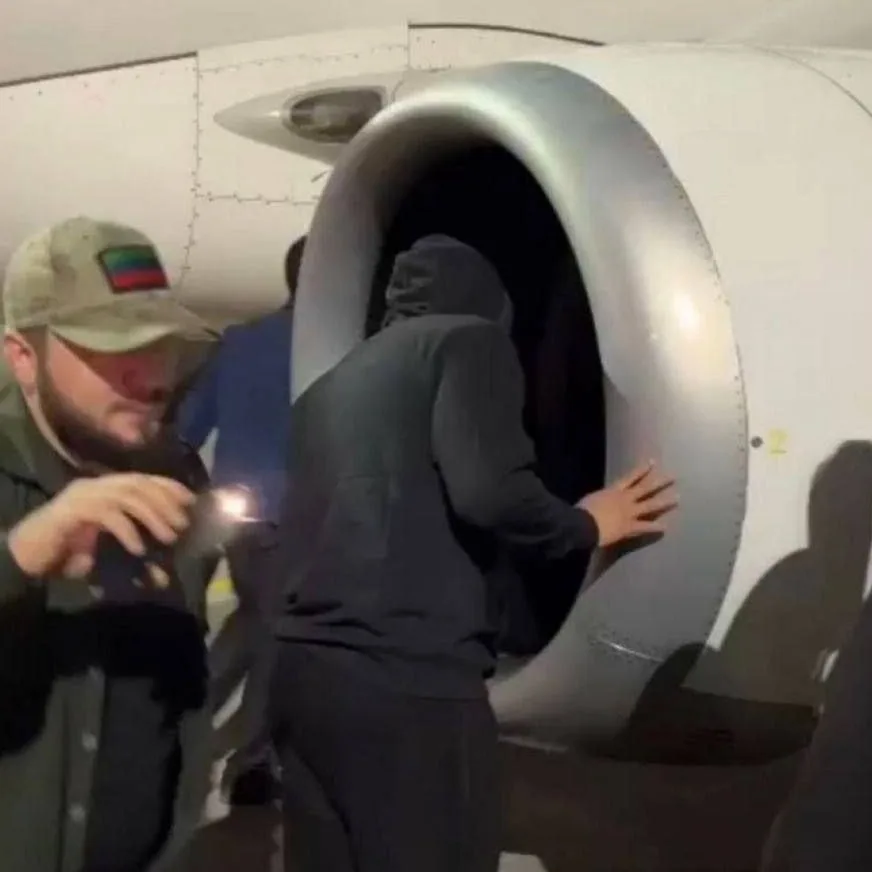
In autumn 2023, for the second time, the Kremlin held an “electoral” farce in the newly occupied territories. Meanwhile, Ukraine decisively seized the initiative in the maritime and Crimean theatres of war. The defence forces regained control over the gas offshore platforms, known as “Boiko Towers,” seized in 2014. Storm Shadow missiles caused losses to the Russian fleet in the occupied Sevastopol and destroyed the headquarters of the Russian Black Sea Fleet. The occupiers in Luhansk and Berdiansk felt the power of ATACMS missiles for the first time. In February 2024, there were unprecedented cases of downing of Russian military aircraft in the airspace of both Ukraine and Russia.
What’s next?
The obsessive spreading of hints of readiness for negotiations and truce in the information space does not indicate that the Kremlin has abandoned plans to destroy the Ukrainian state and Ukrainians who do not want to become Russians. These plans, announced at the beginning of the full-scale war, are regularly mentioned by Medvedev, Putin’s deputy in the Security Council of the Russian Federation, top propagandist Solovyov, and his colleagues of a smaller calibre. In view of this, the actions of the Russians aimed at depriving Ukraine of international support and demoralizing Ukrainian society will continue. In the spring of 2024, the Kremlin’s propaganda machine will focus on the following topics:
- “illegitimacy” of President Volodymyr Zelenskyy and the entire Ukrainian government due to the failure to hold elections in conditions of war. Against this background, propagandists will promote Putin’s “confident victory” in the next Russian pseudo-elections, in which the Kremlin will actively encourage the population of the temporarily occupied territories to participate. To the Ukrainian audience, Russian propaganda will actively promote the point of the “illegality” of all decisions of the authorities and encourage protests against “usurpation”;
READ ALSO: Call a Dictator a Dictator. Why the World Should Not Recognize Russia’s Presidential “Elections”
- illegality of mobilization. The operation aimed at disrupting mobilization in Ukraine and weakening the ability to resist aggression will continue. The arguments will be supplemented with the statement that it is not necessary to enforce the “illegal” decisions of the authorities and the decrees of the “illegitimate” president;
- betrayal of Western partners. The delay of American assistance, the blocking of the Polish border, any indecision in providing weapons will be demonstrated by propaganda as evidence of the “fatigue” of partners from Ukraine and the promotion of a sense of betrayal and helplessness. The operation to discredit Ukraine abroad will also be continued. The Kremlin will try to convince the West that it is not about the confrontation between democracy and dictatorship, but about at least two identical autocracies. It might even contrast the “democratically elected” Putin with the “usurper” Zelenskyy.
The task of the regime that unleashed the bloody war in Europe remains unchanged: the destruction of international law and the security system. Therefore, the Kremlin will not stop its efforts to destabilize Ukraine and the entire democratic world. The only way to counter this is not to believe Russian lies and manipulations, to do everything so that the Kremlin does not have a chance to win.
If you have found a spelling error, please, notify us by selecting that text and pressing Ctrl+Enter.
